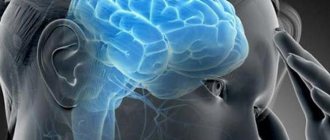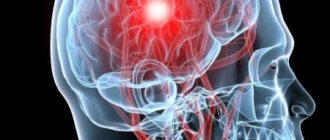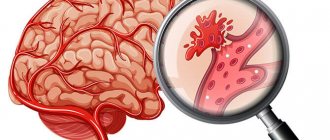Peripheral neuropathy is a manifestation of damage to the peripheral nerves. It is not a separate disease within the framework of medicine, but a complex of symptoms that reflects a certain pathological process in the longest nerve processes of the body. Peripheral neuropathy occurs in a variety of conditions. Most often, symptoms appear gradually and, without appropriate treatment, gradually increase like a snowball.
The most common signs of peripheral neuropathy are pain, sensory disturbances, and muscle weakness. Diagnosing peripheral neuropathy is not so difficult, but finding the true cause of this condition is more difficult. But without this, complete treatment is impossible. Therefore, in addition to establishing the fact of neuropathy itself, doctors are making every effort to find the source of the problem. When the diagnosis is clear, then treatment measures become more accurate and allow the symptoms of the disease to be eliminated. This article is dedicated to everything related to peripheral neuropathy.
Peripheral neuropathy is caused by damage to the peripheral nerves. “Peripheral” in this case means located outside the brain and spinal cord (that is, the central sections). The nerve fibers farthest from the center are most often affected by the disease, because they are the longest in the entire body, and therefore the most vulnerable. These are the nerves of the lower extremities. They carry information from the very bottom (periphery), so to speak, to the central parts of the nervous system and transmit commands back. That is, they form the sensitivity of the legs, control muscles, and provide trophic support (a certain condition of the skin, hair, nails). Therefore, quite often the symptoms of any disease or pathological condition manifest themselves primarily as neuropathy of the lower extremities. If the process is not stopped at this stage, then neuropathy will manifest itself in the arms and torso, and reach the cranial nerves. But there are also types of peripheral neuropathy that, from the first day of the disease, affect not the lower extremities, but, for example, the face (facial nerve neuropathy) or almost all peripheral nerves of the body (Guillain-Barre syndrome).
The basis of peripheral neuropathy is a degenerative-dystrophic process. This means the destruction of nerve fibers against the background of deterioration in their nutrition, attack by harmful substances (including free radicals formed). Both the nerve sheaths and their rods (axons) can be destroyed.
What is peripheral neuropathy
Your peripheral nervous system connects the nerves in your brain and spinal cord, or central nervous system, to the rest of your body, including:
- hands
- palms
- legs
- Feet
- internal organs
- mouth
- face
The job of these nerves is to carry signals about physical sensations back to your brain.
Peripheral neuropathy
is a disorder that occurs when these nerves malfunction due to damage or destruction. This causes disruption of the normal functioning of the nerves. They may send pain signals when there is nothing causing pain, or they may not send pain signals even when something is hurting you. This condition may be caused by:
- damage
- systemic disease
- infection
- hereditary disease
This disorder is uncomfortable, but treatment can be very helpful. The most important thing is to determine whether peripheral neuropathy is the result of a serious underlying disease or not.
Forecast
If it is possible to identify the cause of the disease and begin treatment on time, the prognosis is usually positive. Everything will depend only on how accurately the patient adheres to the recommendations of the attending physician. In this case, medications are also prescribed for treatment that help get rid of the root cause that caused the disruption of the PNS.
If the disease is caused by genetic characteristics, treatment often does not bring the desired result.
The success of treating the idiopathic form of the disease, when the cause cannot be determined, depends only on what comprehensive treatment program the attending physician has selected.
It should be remembered that it takes time to restore nerve fibers. As a rule, the first acute symptoms of the pathology disappear several weeks after the start of therapy. However, it will take more than a month to fully restore the function of damaged nerves. You should be prepared that sensitivity to the affected area will not return soon; sometimes it may take years for the PNS to fully recover.
Symptoms of peripheral neuropathy
Three types of peripheral nerves:
- Sensory nerves
- connect to your skin; - Motor nerves
- connect to your muscles; - Autonomic nerves
- connect to your internal organs.
Peripheral neuropathy can affect one nerve group or all three.
Symptoms of peripheral neuropathy include:
- tingling in the arms or legs
- feels like you are wearing a thick glove or sock
- sharp, stabbing pains
- numbness in the arms or legs
- regularly drop things from your hands
- sensation of fine vibration in the limbs
- thinning of the skin
- low blood pressure
- sexual dysfunction, especially in men
- constipation
- poor digestion
- diarrhea (diarrhea)
- excessive sweating
These symptoms may also indicate other medical conditions, so you should report them to your doctor.
Causes
People with a family history of peripheral neuropathy are more likely to develop this disorder. However, there are many factors and underlying diseases that can also cause this condition.
Common diseases
Nerve damage caused by diabetes is one of the most common forms of neuropathy. This leads to numbness, pain and loss of sensation in the limbs. The risk of neuropathy increases in people who:
- are overweight
- have high blood pressure
- over 40 years old
- have diabetes
According to the University of Chicago Center for Peripheral Neuropathy (UCCPN)
Almost 60 percent of people with diabetes have some degree of nerve damage. These lesions are often associated with high blood sugar levels.
Other chronic diseases that can cause nerve damage include:
- Kidney diseases, in which large amounts of toxins accumulate in the body and damage nerve tissue.
- Hypothyroidism, which occurs when the body does not produce enough thyroid hormone, causing fluid retention and pressure on nerve tissue.
- Diseases that cause chronic inflammation that can spread to nerves or damage the connective tissue surrounding nerve fibers.
- Lack of vitamins E, B1, B6 and B12, which are necessary for the health and full functioning of the nervous system.
Injuries
Physical trauma is the most common cause of nerve damage. These could be road accidents, falls or fractures. Lack of physical activity or staying in one position for too long can also cause neuropathy. Increased pressure on the median nerve (the nerve in the wrist that allows you to feel and move your hand) causes carpal tunnel syndrome. This is a common type of peripheral neuropathy.
Alcohol and toxins
Alcohol can have toxic effects on nerve tissue, putting people with severe alcoholism at increased risk of developing peripheral neuropathy.
Exposure to toxic chemicals found in adhesives, solvents, or insecticides can also cause nerve damage. Additionally, exposure to heavy metals such as lead and mercury can cause this condition.
Infections and autoimmune diseases
Some viruses and bacteria directly attack nerve tissue.
Viruses such as herpes simplex, varicella zoster virus, which causes chickenpox and shingles, and viral lesions caused by the Epstein-Barr virus lead to severe episodes of shooting pain.
Bacterial infections such as Lyme disease can also cause nerve damage and pain if left untreated.
Autoimmune diseases such as rheumatoid arthritis and systemic lupus erythematosus affect the peripheral nervous system in a variety of ways. Chronic inflammation and tissue damage throughout the body, as well as pressure caused by inflammation, can lead to severe nerve pain in the extremities.
Medications
Some medications can also cause nerve damage. These include:
- Anticonvulsants, which people take to treat seizures.
- Drugs to combat bacterial infections.
- Some blood pressure medications.
- Medicines used to treat cancer.
Recent Research in the Journal of Family Practice
also show that statins (a class of drugs used to lower cholesterol and prevent heart disease) may also cause nerve damage and increase the risk of developing neuropathy.
Causes and types of acute polyneuropathies
Neurologists use the term “polyneuropathy” to define peripheral nerve damage syndrome. In everyday life, people use the word “polyneuropathy.”
Currently, more than 200 causes of polyneuropathy are known. Depending on the cause that caused damage to the peripheral nerves, the following types of polyneuropathies are distinguished:
- infectious;
- autoimmune;
- toxic;
- somatogenic;
- hereditary.
Polyneuropathy syndrome can develop with diffuse connective tissue diseases, malabsorption syndrome, and exposure to physical factors. Depending on which part of the peripheral nerve is affected, there are 2 forms of polyneuropathies: myelinopathy and axonopathy. Clinical manifestations of axonopathies and myelinopathies differ according to the following indicators:
- the speed of muscle involvement in the pathological process;
- the course of the pathological process;
- features of the involvement of sensory, motor and autonomic fibers in the process.
The syndromes of individual forms of acute polyneuropathy have their own characteristics. Neurologists at the Yusupov Hospital take them into account when making an etiological diagnosis.
Diagnosis of peripheral neuropathy
Your doctor will perform a physical examination and review your medical history. If based on this he still cannot determine whether your symptoms are caused by peripheral neuropathy, you will be asked to undergo other tests such as:
- Blood tests
. To measure vitamin and blood sugar levels and determine how well your thyroid gland is functioning. - Computed tomography (CT).
Your doctor may also order a CT scan or magnetic resonance imaging scan to make sure there is nothing pressing on your nerve, such as a herniated disc or tumor. - Nerve biopsy.
This is a minor operation that involves removing a small amount of nerve tissue, which can then be examined under a microscope.
Electromyography (EMG)
Electromyography can show problems with the way your body's nerve signals travel to your muscles. For this test, your doctor will place a small needle into your muscle and ask you to gently move the muscle. Probes in the needle will measure the amount of electricity passing through your muscle. During this test, it may feel as if you have been given an injection. Sometimes the area where the needle was inserted becomes painful for several days after the test.
Nerve conduction study
In a nerve conduction study, a diagnostician places electrodes on your skin. They then pass a small amount of electricity through your nerves to test whether nerve signals are being transmitted correctly. This procedure causes minor discomfort, but no side effects are observed after it.
Symptoms and diagnosis of neuropathies
It is difficult to make a correct diagnosis on your own. Having noticed certain symptoms, you need to contact a specialist who can accurately determine the form and stage of the disease. At the initial appointment, patients may describe their sensations as acute burning pain, complain of numbness of the limbs, partial loss of sensitivity and muscle weakness, “pins and needles” and tingling. Sometimes, due to muscle dysfunction, gait may change, as well as muscle cramps and spasms. To make an accurate diagnosis, in addition to interviewing the patient, doctors often use the electromyography method, which allows them to see what reflex-motor activity is and determine the speed of excitation along the nerve. Visual diagnostic methods, such as computed tomography, help complete the picture of the disease.
Treatment of peripheral neuropathy
Treatment is based on treating the underlying disease that led to peripheral neuropathy. If diabetes is the cause, it is important to ensure that blood glucose levels are well controlled. If vitamin deficiency is causing the problem, then taking additional vitamins and adjusting your diet is the treatment. Many treatments can provide relief and help you return to normal activities. Sometimes a combination of treatments works best.
Painkillers
Painkillers such as paracetamol and non-steroidal anti-inflammatory drugs such as aspirin and ibuprofen can be very helpful in controlling moderate pain. If you take them in excess, these drugs may affect liver or stomach function. It is important not to use them for long periods of time, especially if you drink alcohol regularly.
Prescription drugs
Many prescription pain medications can also help control the pain of neuropathy. These include narcotics, some antiepileptic drugs and some antidepressants. Other helpful prescription drugs include:
- Cyclooxygenase-2 inhibitors;
- Tramadol;
- Corticosteroid injections;
- Anticonvulsants such as gabapentin or pregabalin;
- Antidepressants such as amitriptyline;
- Duloxetine (serotonin and norepinephrine reuptake inhibitor).
Prescription drugs used for sexual dysfunction in men are:
- Sildenafil (Viagra);
- Vardenafil (Levitra, Staxyn);
- Tadalafil (Cialis);
- Avanafil (Stendra).
Healing procedures
Your doctor may use several medical treatments to control the symptoms of this condition. Plasmapheresis
is a blood transfusion that removes potentially irritating antibodies from your bloodstream. If you are prescribed a nerve block, your doctor will inject an anesthetic directly into your nerves.
Transcutaneous electrical nerve stimulation (TENS)
Transcutaneous electrical nerve stimulation is not effective for everyone. During TENS, electrodes placed on the skin send a small amount of electricity into the skin. The goal of this treatment is to block the nerves from transmitting pain signals to the brain.
Ergonomic tire
Ergonomic splinting may help if neuropathy affects your legs and arms. These splints provide support to the part of your body where discomfort occurs. This may relieve pain. For example, a cast or splint that keeps your wrists in the correct position while you sleep can ease the discomfort of carpal tunnel syndrome.
Personal care
In addition to over-the-counter pain relievers, many people have found relief from peripheral neuropathy through:
- chiropractors
- acupuncture
- massage
- meditation
- yoga
Moderate, regular exercise may also help reduce discomfort.
If you drink alcohol or smoke, consider cutting back or quitting altogether. Alcohol and tobacco increase nerve pain and can cause nerve damage with long-term use.
Precautionary measures
If you have peripheral neuropathy, you are potentially at increased risk of accidents at home. To improve security, you can do the following:
- Always wear shoes to protect your feet.
- Try to remove any items from the floor that could cause you to trip.
- Check the temperature of your bath with your elbow, not your hand or foot.
- Install grab bars in your bathtub or shower.
- Use bath mats that can prevent slipping.
- Don't stay in one place for too long. Get up and move around a couple of times every hour. This is especially important for those whose work involves a sedentary lifestyle.
How can cryotherapy help with neuropathy?
Cryotherapy is one of the methods of physiotherapy in which the patient’s body is affected by low temperature (from -70 to -130 degrees). There are 2 types of cryotherapy:
- General, which affects the entire body. This type uses liquid nitrogen steam.
- Local, acting on a specific area of the body. Use ice, cold air or liquid nitrogen.
Thanks to the cold, at the beginning of the procedure the vessels narrow, and at the end of the therapy they expand again, saturating the body tissues with nutrients and oxygen. Cold normalizes the functioning of the nervous system, which improves the patient's condition.
Prevention of peripheral neuropathy
Even if you have a family history of this disorder, you can help prevent its onset by:
- Avoid drinking alcohol or drink it only in moderation.
- Avoid smoking or quit smoking completely (if you smoke).
- Give preference to healthy foods.
- Maintain a physically active lifestyle.
You can reduce your risk of peripheral neuropathy by:
- Knowing what toxins you may be exposed to at work or school.
- Protecting your feet during sports (especially those that involve your legs).
- Never inhale toxins, such as those found in adhesives.
If you have diabetes, pay special attention to your feet. Wash and examine your feet daily, and moisturize them with a natural lotion.











